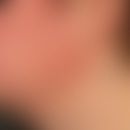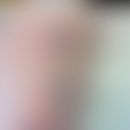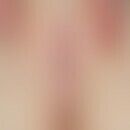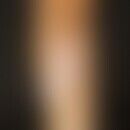Synonym(s)
Excited skin syndrome; false positive epicutaneous reaction
DefinitionThis section has been translated automatically.
Occurrence of false positive epicutaneous test reaction due to increased sensitivity, e.g. epicutaneous testing for florid disease
External therapyThis section has been translated automatically.
Glucocorticoid externa in indifferent bases such as 0.5-1.0% hydrocortisone ointment, 0.1% hydrocortisone butyrate cream (e.g. Alfason), 0.1% betamethasone ointment (e.g. Betagalen, Betnesol), 0.25% prednicarbate ointment(e.g. Dermatop), mometasone furoate ointment(e.g. Ecural).
Internal therapyThis section has been translated automatically.
- If necessary, more moderate adjustment to an oral antihistamine such as levocetirizine (e.g. Xusal) 1 tbl/day or desloratadine (e.g. Aerius) 1 tbl/day. Increased effect is shown under i.v. administration, e.g. with dimetinden (e.g. Fenistil) 4-8 mg/day i.v.
- In the case of extensive findings, short-term internal use of glucocorticoids in low doses such as prednisolone (e.g. Decortin H) 20-40 mg/day, rapid stepwise dose reduction according to clinical findings.
LiteratureThis section has been translated automatically.
- Cockayne SE (2000) Angry back syndrome is often due to marginal irritants: a study of 17 cases seen over 4 years. Contact Dermatitis 43: 280-282
- Duarte I (2002) Excited skin syndrome: study of 39 patients. Am J Contact Dermat 13: 59-65
Incoming links (1)
Excited skin syndrome;Outgoing links (11)
Antihistamines, systemic; Desloratadine; Dimetinden; Epicutaneous test; Glucocorticosteroids systemic; Glucorticosteroids topical; Hydrocortisone; Levocetirizine; Mometasone furoat; Prednicarbate; ... Show allDisclaimer
Please ask your physician for a reliable diagnosis. This website is only meant as a reference.



